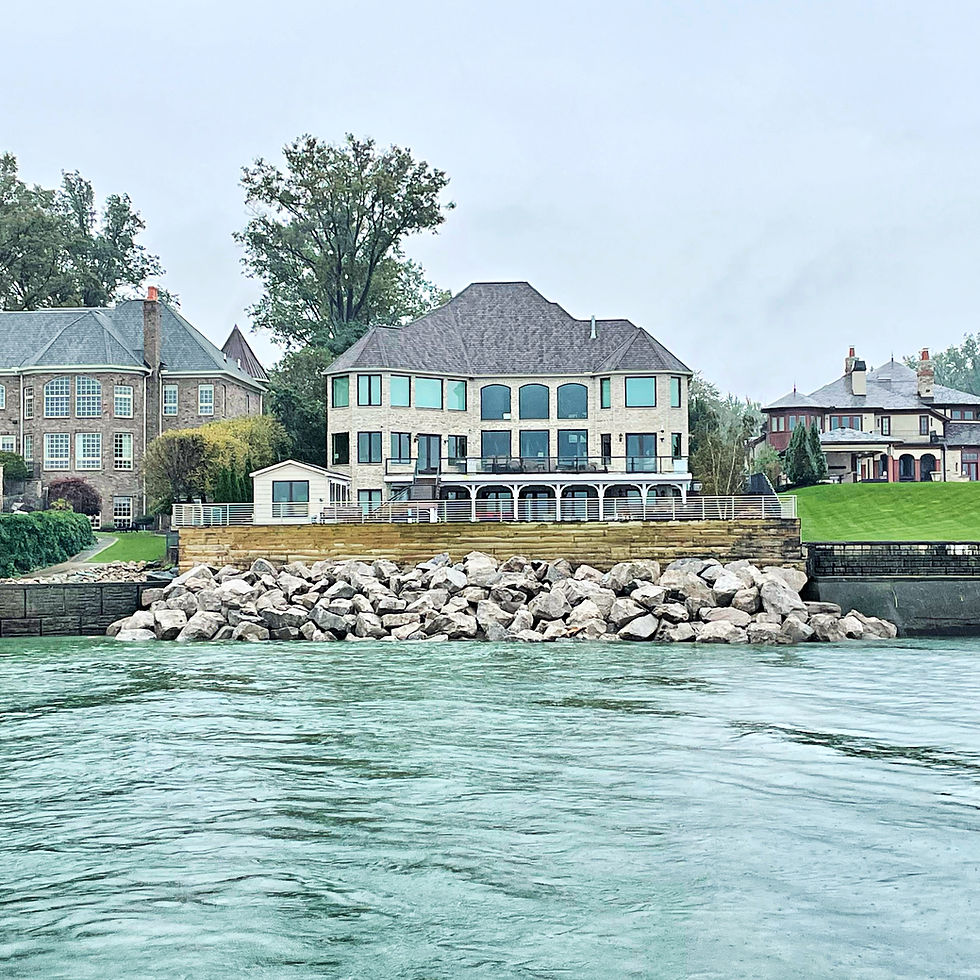Another mild winter, results in severe erosion on the Southern shore of Lake Erie.
- Demex_Marine

- Apr 13, 2023
- 2 min read
With the warmer weather upon us, many lakefront residents are wondering why such a mild winter did so much damage to their shoreline. The evidence of the erosion due to the lack of ice build-up is not new in 2023, but rather “There have been significant downward trends in lake ice for many years. This year is a continuation of warming winters and declining ice,” University of Michigan climate researcher Richard Rood. The ice coverage, which dipped to historic lows on the southern shore of Lake Erie this winter is what protects the shoreline from the wave energy that is exasperated by the lake effect winds NE Ohio experiences. The freeze-thaw cycle we see in our communities is different from what we see in the waters of the lake. The extended time at exceedingly low temperatures needed for the lake to effectively “build” ice, is far different than when ice bubbles, or ice lilies (free-floating ice) blow into the shore.

Solid Ice build-up along the shore of Lake Erie.
When the lake “builds” ice it becomes one with the shore, creating space between the earth and the waves. This allows the crest of the waves to break on the ice and gently wash across the earth, and the highest impact of that wave swirls under the ice, forcing it lakeward once again. Failure of ice build-up, results in the energy of the wave battering the earth, and the crest breaking onto the wet and increasingly heavy shoreline, making it easier to undermine it, and eventually wash it away. Even worse when the ice lilies move in, and the waves use them as battering rams against the shore, the entire process of erosion becomes expedited.

Ice lilies blew toward the shore in Avon Lake, Ohio, in February 2023.
The solution to our warmer winters and exponential erosion is right here in NE Ohio already, and we’ve all seen it in one form or another, it’s limestone. But we aren’t talking gravel limestone, or garden-sized stones, we are talking large 3-4 ton armor stones. In June of 1994, the United States Army Corp of Engineers (USACE) issued a publication outlining the research behind the revetment design, their standards, and how they were to be installed. This same document is used by coastal engineers across the Great Lakes Region to design shoreline protection for residential, commercial, and heavy civil projects alike.

Variations in the angle of reproach can be found depending on the wind and wave data, this is commonly referred to as the slope of the revetment. We most commonly see a 2:1 slope and entrenched toe stone in NE Ohio. Demex Marine Construction has extensive experience installing these revetments for both residential and heavy civil construction projects across Lake Erie’s shores.




Comments